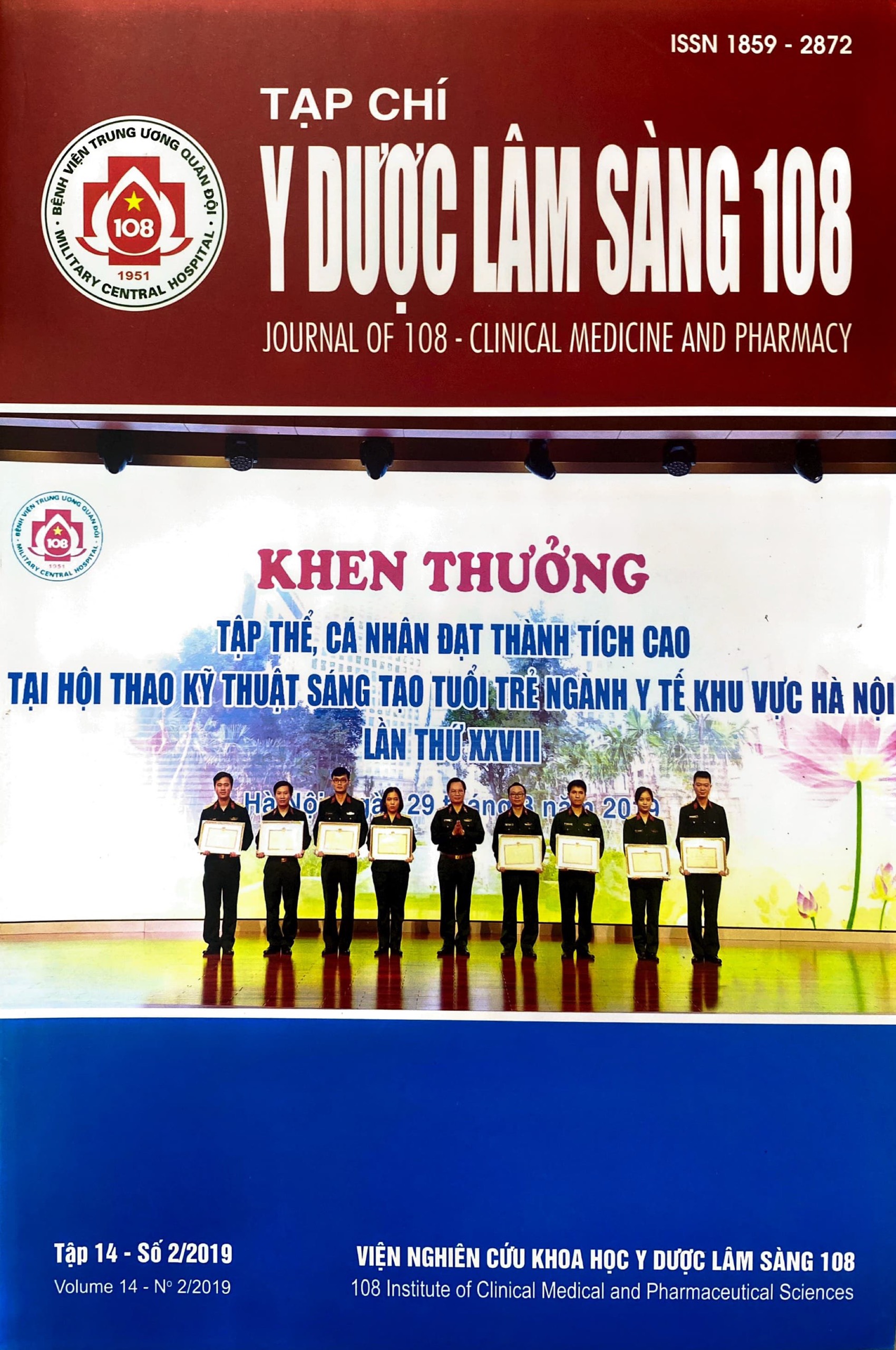Result of endoscopic polypectomy for 365 colorectal polyps
Main Article Content
Keywords
Abstract
Objective: Describing endoscopic characteristics of colorectal polyps and assessing the effectiveness and complications of endoscopic polypectomy. Subject and method: 161 patients were enrolled in the study: 365 polyps are detected and cutted endoscopically. We perform the technique of cutting polyp using snare, hot forceps biopsy, injector, hemoclips or endoloop to stop and prevent bleeding. Complications were detected and treated during procedure. Result: Age: 60.7 ± 11.2 years, 20.5% women and the mean number of polyps per patient was 2.46 in the man group and 1.55 in the women group. Solitary polyps (52.8%), multiple polyps (47.2%). The rate of polyps were seen most frequently at sigmoid colon (30.7%) and anal-rectum (22.2%). Stalked polyps (62.2%), flat polyps (37.8%). Polyp 1 - 2cm in size accounted for 46.8%. The rate of successful polypectomy was 100%. There was no case of perforation and 7 cases had early bleeding but successfully treated by clipping. Conclusion: Endoscopic polypectomy can be done successful and safe even for large colorectal polyp when we apply submucosal injection and using clip or endoloop to stop and prevent bleeding.
Article Details
References
2. Tống Văn Lược (2002) Nghiên cứu kết quả cắt polyp đại trực tràng bằng thòng lọng điện theo hình ảnh nội soi mềm và xét nghiệm mô bệnh học. Luận văn Tiến sỹ y học, Trường Đại học Y Hà Nội.
3. Ali Zafar et al (2012) Colorectal polyps: When should we tattoo?. Surgical Endoscopy 26(11): 3264.
4. Arebi N et al (2007) Endoscopic mucosal resection of 161 cases of large sessile or flat colorectal polyps. Scand J Gastroenterol 42(7): 859-866.
5. Bizid et al (2015) Predictors of successful endoscopic colonic polypectomy. Tunis Med 93(11): 668-672.
6. Kandiah K et al (2017) Polyp ectomy and advanced endoscopic resection. Frontline Gastroenterol 8(2): 110-114.
7. Komeda Yoriaki et al (2017) Removal of diminutive colorectal polyps: A prospective randomized clinical trial between cold snare polypectomy and hot forceps biopsy. World journal of gastroenterology 23(2): 328-335.
8. Lee Suck-Ho et al (2012) Korean guideline for colonoscopic polypectomy. Clinical endoscopy 45(1): 11-24.
9. Piraka C et al (2017) Cold snare polypectomy for non-pedunculated colon polyps greater than 1 cm. Endoscopy international Open 5(3): 184-189.
 ISSN: 1859 - 2872
ISSN: 1859 - 2872
